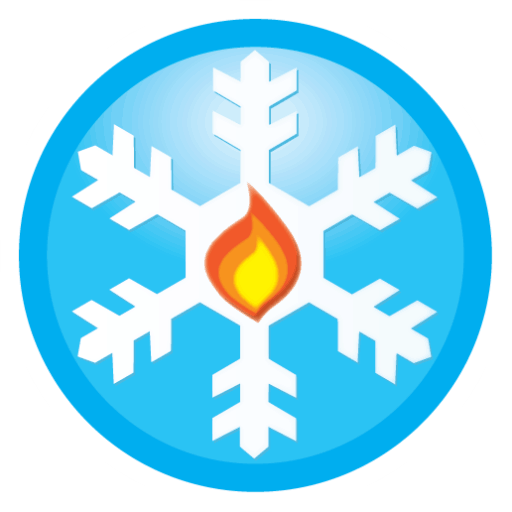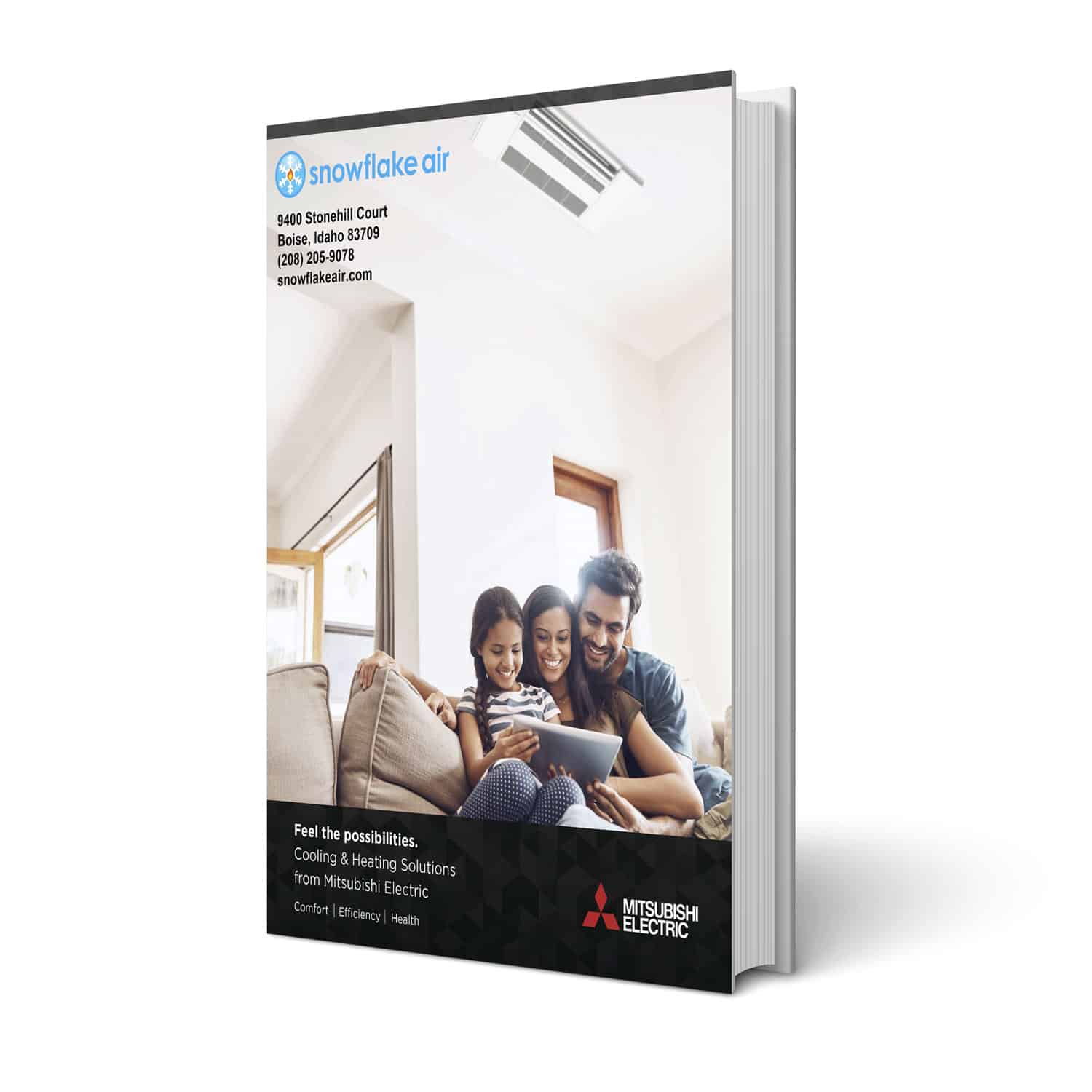Uneven Temperature In The House? Here’s Why (And How To Fix It)
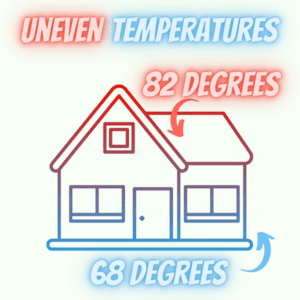 Uneven temperatures at home are a common problem we hear about during the harshest times of the winter and the summer. There are a few different reasons you may be feeling uneven temperatures around the house, and it’s not always easy to tell what is causing the problem.
Uneven temperatures at home are a common problem we hear about during the harshest times of the winter and the summer. There are a few different reasons you may be feeling uneven temperatures around the house, and it’s not always easy to tell what is causing the problem.
In some cases, you can fix it yourself, but in some, you will need to call in a professional to help you locate the problem and solution.
Six Causes Of Uneven Room Temperatures In Boise Metro Homes
Everyone’s first thought is that there is something wrong with your heating or cooling system, but that’s not always the case. There can be a few other factors that play into a certain room in your house staying uncomfortable, and we want to go over 6 of the causes of these uneven temperatures.
- Blocked Vents
- High Ceilings
- Failing HVAC System
- Static Pressure
- Airflow Problems
- Wrong-Sized HVAC System
Blocked Vents
If you have blocked vents, it’s going to make it tough for air to travel properly around the home. Go around the home and make sure that no furniture is blocking a vent, and that there aren’t closed vents in the room that won’t stay comfortable.
Read More: Ductless Mini Splits Are Perfect For Your Home Office
High Ceilings
Rooms with high ceilings tend to be bigger, and the conditioned air doesn’t always stay in the lower portion of the room, where people are residing. If you have a room with high ceilings that never stays comfortable, the problem could be the design of the room itself.
This doesn’t mean you can’t do some things that make the room more comfortable. Installing a ceiling fan to push the warm air down and circulate the air will help even the temperature. You can also install a ductless mini split… more on that later.
Failing HVAC System
The answer could be as simple as your HVAC system is failing. There could be other problems like faulty insulation or leaky windows, but you could always just have an older, failing HVAC system. An HVAC technician should be able to look at your system and determine if it’s the cause of the problem.
Static Pressure
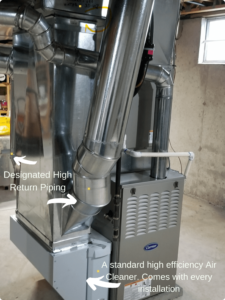
Airflow Problems
This goes along with static pressure, but having airflow problems could cause your home to experience uneven temperatures as well. Make sure to check your air filter. If it’s clogged, it could be preventing air from flowing the way it should. You may also be in need of a duct cleaning. If your ducts aren’t the problem, it could be the fan in your HVAC system.
Wrong-Sized HVAC System
If you have an HVAC system that is too big or too small, it’s going to unevenly treat your home. A system that is too big will short cycle, turning off and on too often. This is because the initial large blast of heating or cooling is going to trick the thermostat into thinking the whole home is properly treated. Then the system will shut down before every room becomes comfortable.
If your system is too small, it’s not going to have enough power to reach every space in your home.
How To Fix Uneven Temperature In Your House
So we’ve gone over a few of the reasons you may have uneven temperatures, but we also want to go over a few solutions. First off, make sure your air filter is clean, and your home is properly insulated. This is stuff you can take care of yourself. If these things seem to be in order, it’s time to call an HVAC professional. They will be able to tell you what the problem is, and how you can fix it!
Read More: How Many Rooms Can A Mini Split Treat?
Zoned Heating And Cooling
If you have uneven heating and cooling, you should look into zoned heating and cooling. This is when you break your HVAC down into different sections or zones around your home. You will use different thermostats to measure and regulate the different zones. This allows you to treat the spaces around the home independently. It allows you to save energy, customize your comfort, and treat the spaces in your home that never seem to stay comfortable.
Zoned Vs. Ductwork
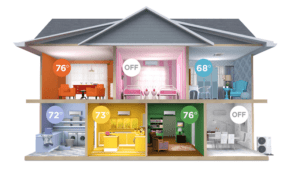 When you zone your HVAC, it means you are using a system that treats a particular area at the space it’s needed. With a central air system, you will use ducts to carry air from a central location, usually in the basement, throughout your home. This can allow air to leak and escape, or even cool down or heat up in the transfer process. A zoned system uses technology to eliminate the use of ducts, making the heating and cooling more efficient.
When you zone your HVAC, it means you are using a system that treats a particular area at the space it’s needed. With a central air system, you will use ducts to carry air from a central location, usually in the basement, throughout your home. This can allow air to leak and escape, or even cool down or heat up in the transfer process. A zoned system uses technology to eliminate the use of ducts, making the heating and cooling more efficient.
Our Recommendation: Ductless Mini Split Heating And Cooling
We love ductless mini splits for heating and cooling spaces with uneven temperatures. You can install one unit, or multiple zones, and use them independently. They are extremely energy efficient, and whisper quiet.
Ductless mini splits can also be used as a supplement to a current system. This means that you don’t have to totally replace your current system, you can instead use a single ductless mini split to heat and cool that part of your home that never stays comfortable.
How It Works
A ductless mini split uses heat pump technology to transfer heat from the pump outside to the mini split inside, through a small piece of tubing. No ducts are used, and each outside condenser can support several mini splits inside.
This system is energy efficient and not nearly as invasive as installing ductwork.
Mini Split Installation In Kuna, ID
Snowflake Air is a specialist when it comes to mini split installations in Kuna, ID, and the surrounding areas. We have been servicing, installing, and repairing ductless systems for years, and would love to help you out with your home comfort. Just give us a call at (208) 205-9078 or click here to contact us online!


